#nutrcracker norsk
Text
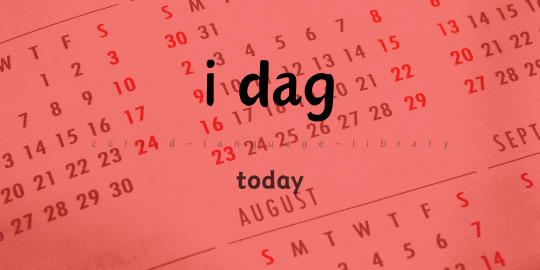

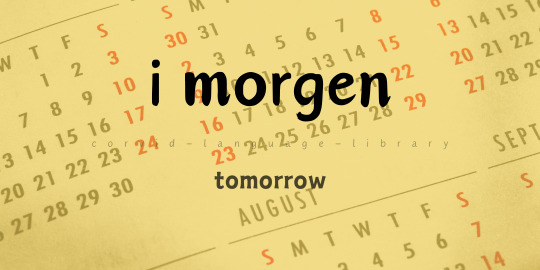






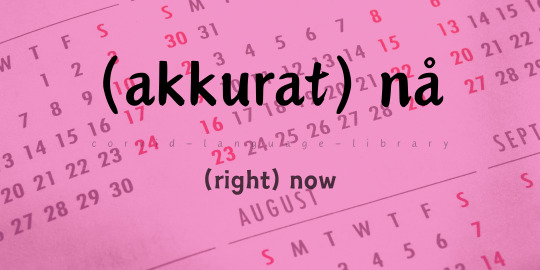

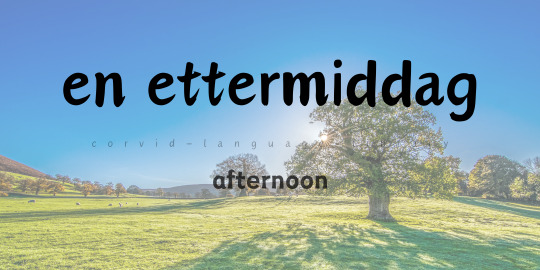

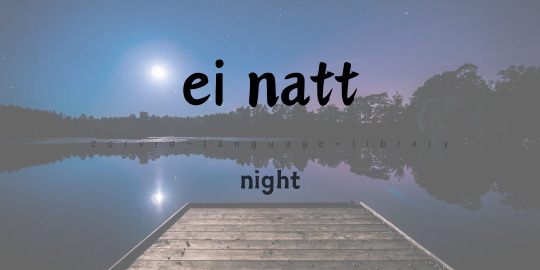
Norwegian Bokmål for Total Beginners (January 2024 Crash Course)
12. Calendar
Hello all! Today we've just got some useful when words.
i dag - today
i går - yesterday
i morgen - tomorrow
i forgårs - the day before yesterday
i overmorgen - the day after tomorrow
i morges - this morning
i ettermiddag - this afternoon
i kveld - this evening
i natt - tonight, last night*
(akkurat) nå - (right) now
morgen (m) - morning
ettermiddag (m) - afternoon
kveld (m) - evening
natt (m/f) - night
*I natt describes the closest night. If it's 9am and you say "i natt", it means the night before. If it's 9pm, it means the coming night.
#nutrcracker norsk#norwegian langblr#beginner norwegian#jan '24 beginner norwegian crash course#learning norwegian#norwegian: a1#my oc: norwegian#norwegian#norsk
46 notes
·
View notes
Text









Norwegian Bokmål for Total Beginners (January 2024 Crash Course)
4. People
mann (m) [pl: menn] - man, husband
kvinne (m/f) - woman
jente (m/f) - girl
gutt (m) - boy
barn (n) - child
baby (m) - baby
venn (m) - friend (male or female)
venninne (m/f) - female friend
Extras
You can also use 'ei dame' for 'woman'. This is more like 'lady'. Generally, I hear people use 'dame' for a specific person ("she's a nice lady") and 'kvinne' for women generally, or when emphasising a person's gender
'Dame' is also colloquially used for girlfriend (the equivalent of boyfriend is 'type')
There's also the word 'kjæreste' to mean boyfriend/girlfriend/partner (yes, it's gender neutral)
There's also the word 'et spedbarn' for a baby or infant
Grammar
I talked previously about grammatical gender and the lack of a definite article (the word "the"). In Norwegian, when you want to say the [something], you add a definite suffix. These are as follows:
Masculine: -en (mann -> mannen)
Feminine: -a (kvinne -> kvinna)
Neuter: -et (barn -> barnet)
Plural: -ene (venn -> vennene)
Special notes:
As previously mentioned, all feminine nouns can behave as masculine, so both kvinna/jenta and kvinnen/jenten are correct
Neuter plural nouns can take -ene OR -a, and sometimes it's more common and natural to use -a. Barn is one of those cases. Barnene is correct, but most people would say barna. -Ene is a lot more common otherwise.
When using den/det and denne/dette, you have to use the definite form of the word (that girl = den jenta, that boy = den gutten, that child = det barna, these people = disse personene, those men = de mennene)
Sample Sentences
Hun er ei kvinne / Hun er en kvinne (She is a woman)
Den personen er en mann (That person is a man)
#nutrcracker norsk#norwegian langblr#beginner norwegian#jan '24 beginner norwegian crash course#learning norwegian#norwegian: a1#my oc: norwegian#norwegian#norsk
18 notes
·
View notes
Text


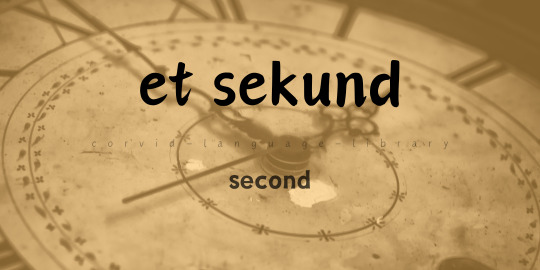
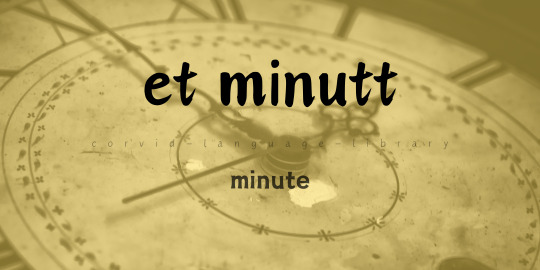


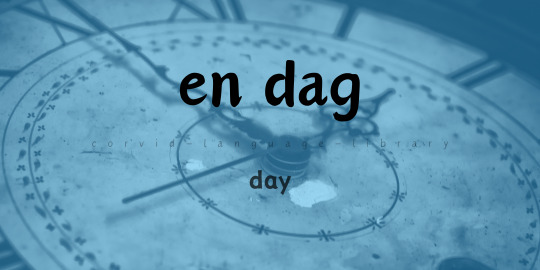


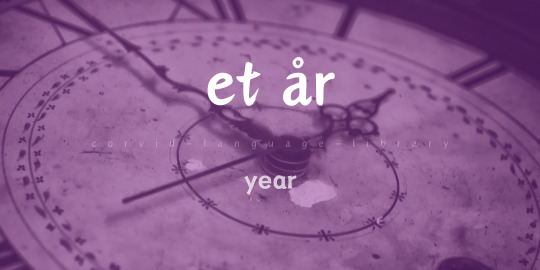
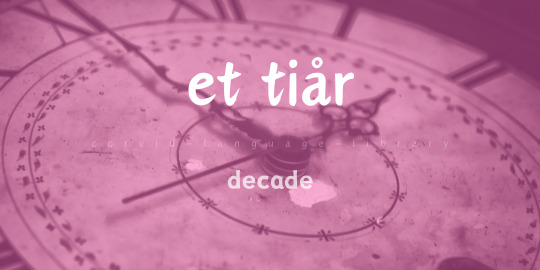

Norwegian Bokmål for Total Beginners (January 2024 Crash Course)
15. Time
tid (m/f) - time
klokke (m/f) - clock
sekund (n) - second
minutt (n) - minute
time (m) - hour*
døgn (n) - 24 hours
dag (m) - day
uke (m/f) - week
måned (m) - month
år (n) - year
tiår (n) - decade
århundre (n) - century
*En time can also mean a lesson (at school) or an appointment (e.g. at the hairdresser), even if the amount of time you're there is more or less than an hour.
Grammar: What's the time?
In Norwegian, you don't ask "what's the time"; you ask "what's the clock?"
Hva er klokka/klokken? (What's the time)
Klokka/klokken er to (It's two o'clock)
You can use twelve hour or twenty-four hour time. You can read the time like a digital clock (9:22 = ni tjueto) or like so:
10:00 klokka ti
10:05 fem over ti
10:10 ti over ti
10:15 kvart over ti
10:20 ti på halv elleve
10:25 fem på halv elleve
10:30 halv elleve
10:35 fem over halv elleve
10:40 ti over halv elleve
10:45 kvart på elleve
10:50 ti på elleve
10:55 fem på elleve
Did you notice something funny? Whereas in English we describe 10:30 as half (past) ten, in Norwegian the same time is described as half (to) eleven. Please keep this in mind when making appointments!
It takes...
Just like in English, if you want to describe duration you can use the verb å ta (to take).
Det tar ti minutter (It takes ten minutes)
Ta deg god tid (Take your time)
Det tar tid (It takes time)
Et døgn/en dag?
Et døgn describes a twenty-four hour period, whereas a day is a bit more variable. If I say something takes en dag, that might mean it takes from 7am to 9pm. But something that takes et døgn is something I start at 7am and finish at 7am the following morning.
#nutrcracker norsk#norwegian langblr#beginner norwegian#jan '24 beginner norwegian crash course#learning norwegian#norwegian: a1#my oc: norwegian#norwegian#norsk
14 notes
·
View notes
Text


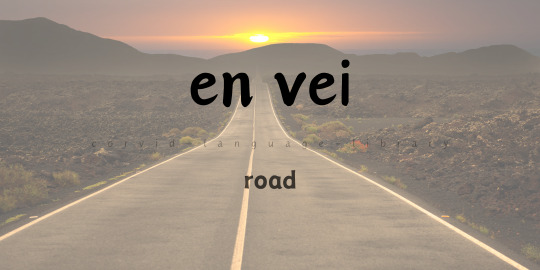




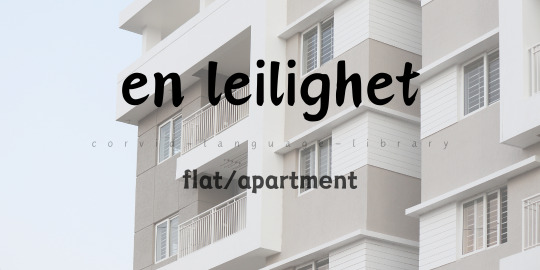
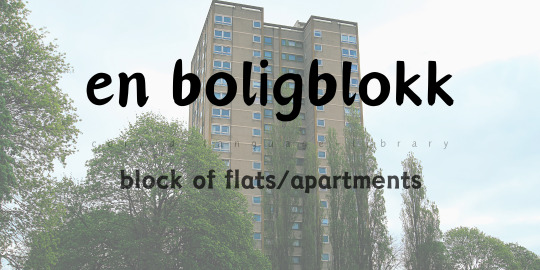

Norwegian Bokmål for Total Beginners (January 2024 Crash Course)
22. Hvor bor du? (Where do you live?)
Good morning/afternoon/evening to you! Today's post is a long one because we have some cultural insights at the end if you're interested. But if you're just here for the vocabulary, that's fine too.
by (m) - town, city
bygd (m/f) - village
vei (m) - road
gate (m/f) - street
bolig (m) - residence, housing
hus (n) - house
leilighet (m) - apartment/flat
boligblokk (m) - block of flats/apartments
hytte (m/f) - cottage, cabin
Sample Sentences
Bor du i et hus eller en leilighet? (Do you live in a house or a flat?)
Susanna bor i tredje etasje (Susanna lives on the third floor)
Den boligblokken har åtte etasjer (That block of flats has eight floors)
Bolige i Oslo er dyre (Housing in Oslo is expensive)
Husene på denne veien er veldig fine (The houses on this road are very nice)
Karl Johans gate er en lang gate i Oslo (Karl Johans street is a long street in Oslo)
False Friends in Norwegian
Lots of vocabulary in Norwegian is similar to English vocabulary. But there are some words that look like an English word, but actually have a different meaning! Today we learned that ei gate is NOT a gate, but a street!
Here are a few mor beginner-level false friends to watch out for!
🇳🇴en dress = 🇬🇧a suit
🇬🇧a dress = 🇳🇴en kjole
🇳🇴bra = 🇬🇧good, well
🇬🇧a bra = 🇳🇴en BH (brystholder = breast holder)
🇳🇴ei mappe = 🇬🇧a folder
🇬🇧a map = 🇳🇴et kart
🇳🇴en sky = 🇬🇧a cloud
🇬🇧sky = 🇳🇴himmel
🇳🇴å telle = 🇬🇧to count
🇬🇧to tell = 🇳🇴å fortelle
🇳🇴en advokat = 🇬🇧a lawyer
🇬🇧an advocate = 🇳🇴en forkjemper
🇳🇴akkurat = 🇬🇧exactly
🇬🇧accurate = 🇳🇴nøyaktig
Cultural Insight: Hytter i Norge
In Norway, it's common for families to own a cottage out in the countryside. They tar hyttetur (go on a cottage-trip) during the holidays, typically at Easter and often during the summer too. Some cottages are modern with all the comforts of home (wifi, kitchen gadgets etc), while some families are adamant that the true hytte-experience means being cut off from all that. Some cottages don't even have an inside toilet, and you'll have to use the utedo (outdoor toilet) instead!
Owning a cottage has become more popular over time, and in recent years (especially since covid and working from home) the industry has boomed. This is creating a lot of controversy in Norway: building more cottages to supply the demand means clearing large swathes of forests and marshlands. Norwegians are quite protective about nature (or, at least, they claim to be) and many are unhappy with this development. It's also a problem for the locals who can't buy houses in their hometowns simply because all the houses are being bought up by city folk. Additionally, it means that for large portions of the year these places are ghost towns and businesses may struggle to make ends meet.
#nutrcracker norsk#norwegian langblr#beginner norwegian#jan '24 beginner norwegian crash course#learning norwegian#norwegian: a1#my oc: norwegian#norwegian#norsk#norwegian culture
12 notes
·
View notes
Text
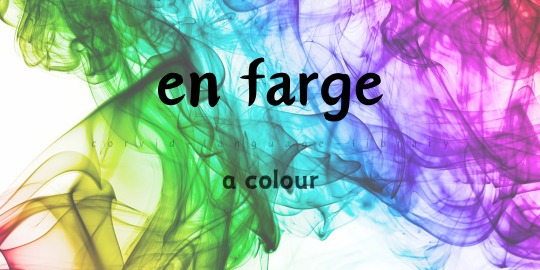
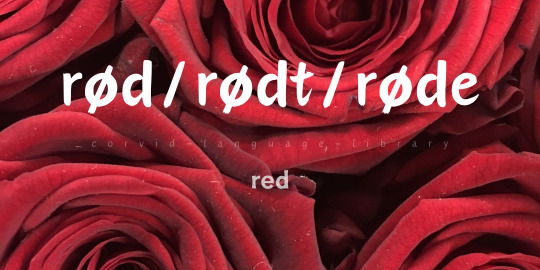


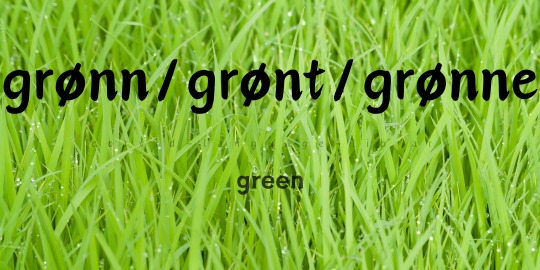

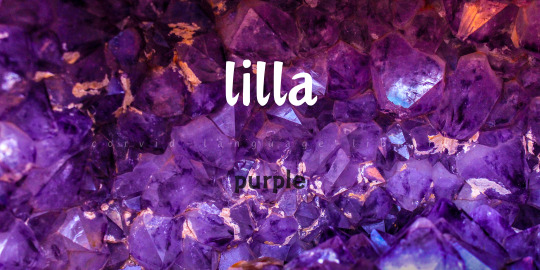
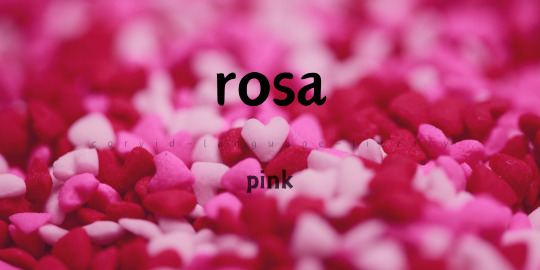


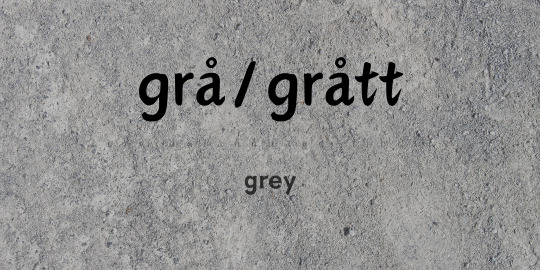
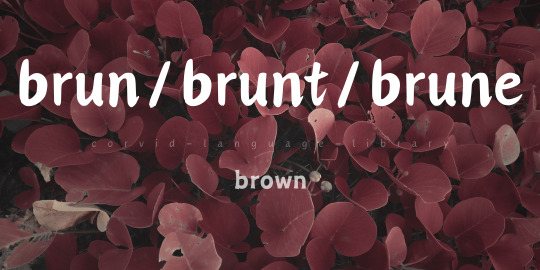
Norwegian Bokmål for Total Beginners (January 2024 Crash Course)
8. Colours
Welcome to week two! We're kicking off the week by looking at some colours and the grammar of adjectives.
farge (m) - colour
rød (m/f) rødt (n) røde (pl) - red
oransje - orange
gul (m/f) gult (n) gule (pl) - yellow
grønn (m/f) grønt (n) grønne (pl) - green
blå (m/f/pl) blått (n) - blue
lilla - purple
rosa - pink
svart (m/f/n) svarte (pl) - black
hvit (m/f) hvitt (n) hvite (pl) - white
grå (m/f/pl) grått (n) - grey
brun (m/f) brunt (n) brune (pl) - brown
Grammar: Adjectives
Many adjectives in Norwegian change depending on what they're describing. If the noun is neuter, the adjective also needs to be in the neuter form:
en rød bil (a red car)
ei gul bok (a yellow book)
et brunt hus (a brown house)
svarte biler (black cars)
Adjectives also have a definite form. Good news: it's the same as the plural form! So if you want to say the red car/yellow book/white house/black cars, you have to use den/det/de + the plural form of the adjective + definite form of the noun:
den røde bilen (the red car)
den gule boka (the yellow book)
det brune huset (the brown house)
de svarte bilene (the black cars)
Colours as nouns
To use colours as nouns, we always use the neuter form:
Jeg liker blått (I like blue)
Grønt er en fin farge (Green is a nice colour)
Grått og brunt er litt kjedelige (Grey and brown are a bit boring)
#nutrcracker norsk#norwegian langblr#beginner norwegian#jan '24 beginner norwegian crash course#learning norwegian#norwegian: a1#my oc: norwegian#norwegian#norsk
11 notes
·
View notes
Text
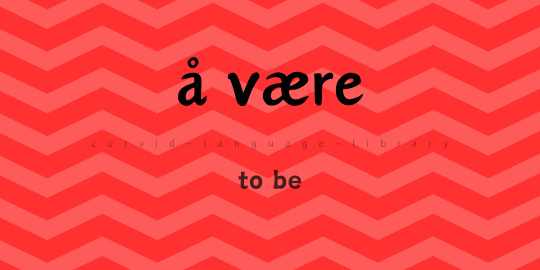

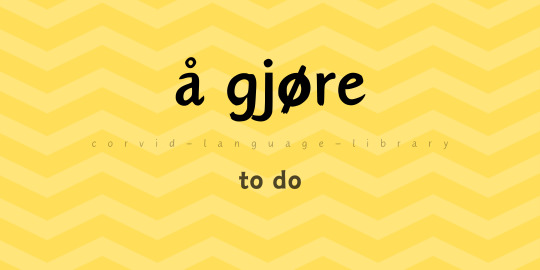

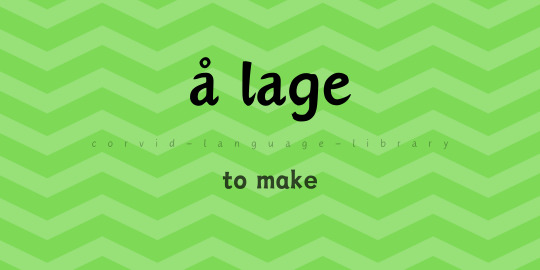




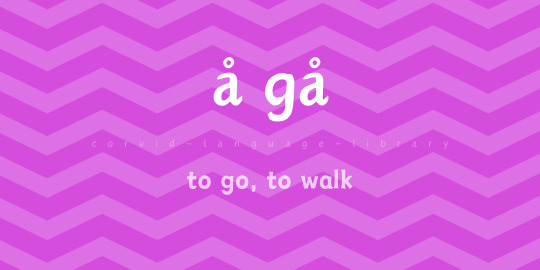
Norwegian Bokmål for Total Beginners (January 2024 Crash Course)
9. Common Verbs
Hi everyone! Today we're looking at common verbs in Norwegian, and our grammar will have us looking at the present tense and infinitive forms.
å være [er] - to be
å ha - to have
å gjøre [gjør] - to do
å bo - to live (reside)
å lage - to make
å like - to like
å ta - to take
å gi - to give
å komme - to come
å gå - to go, to walk
Grammar: Present Tense
Norwegian verbs are pretty easy. Unlike a lot of languages where the verb changes depending on the person, Norwegian only has one form for each tense!
With the exception of a couple of irregulars, the present tense in Norwegian is very easy to make: just take off 'å' and add 'r'!
jeg har = I have
du bor = you live
han lager = he makes
hun liker = she likes
hen tar = they take
vi gir = we give
dere kommer = you come
de går = they go
The exceptions I've listed above are å være and å gjøre:
jeg er = I am
vi gjør = we do
And that's it! Easy peasy!
#nutrcracker norsk#norwegian langblr#beginner norwegian#jan '24 beginner norwegian crash course#learning norwegian#norwegian: a1#my oc: norwegian#norwegian#norsk
10 notes
·
View notes
Text
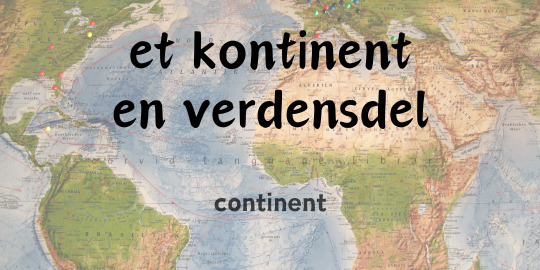






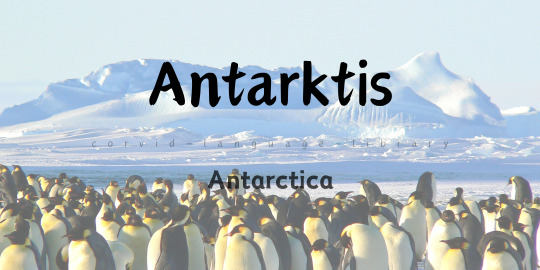
Norwegian Bokmål for Total Beginners (January 2024 Crash Course)
26. Continents
Good morning/afternoon/evening everyone! We're back with some continents today:
kontinent (n), verdensdel (m) - continent
Afrika - Africa
Asia - Asia
Oseania - Oceania
Nord-Amerika - North America
Sør-Amerika - South America
Europa - Europe
Antarktis - Antarctica
Grammar: I live in...
Typically when you talk about what country or city you live in, you use 'i' (in):
Vi bor i Frankrike - We live in France
Bor dere i Oslo? - Do you live in Oslo?
But sometimes, you use 'på'. This is typically if the country or place is and island, but sometimes there's no apparent reason for it:
Hen bor på island - They live in Iceland
De har et fint hus på Lillehammer - They have a nice house in Lillehammer
Don't worry if you get it wrong; Norwegians know it's confusing!
With continents, you use 'i':
Botswana er et land i Afrika (Botswana is a country in Africa)
De bor i Asia (They live in Asia)
Er Mexico i Nord-Amerika eller Sør-Amerika? (Is Mexico in North America or South America?)
Bonus: Kaizers Orchestra
Immersion is a big part of learning a language, so allow me to introduce you to one of my favourite bands: Kaizers Orchestra! They're a famous rock band in Norway. The dialect is a bit difficult, but you can still learn lots of vocabulary from their songs.
youtube
#nutrcracker norsk#norwegian langblr#beginner norwegian#jan '24 beginner norwegian crash course#learning norwegian#norwegian: a1#my oc: norwegian#norwegian#norsk#Youtube
9 notes
·
View notes
Text



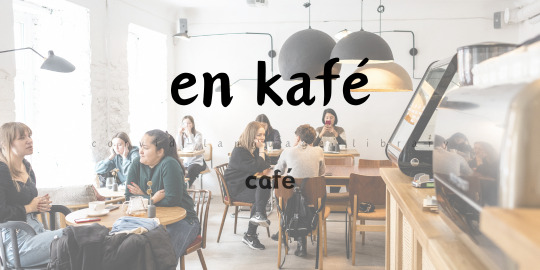









Norwegian Bokmål for Total Beginners (January 2024 Crash Course)
23. Around town
Good morning/afternoon/evening folks! We're back with some words to use around town today:
hjem (n) - home
butikk (m) - shop
kontor (n) - office
kafé (m) - café
restaurant (m) - restaurant
bibliotek (n) - library
bank (m) - bank
postkontor (n) - post office
rådhus (n) - city hall
kino (m) - cinema
togstasjon (m) - train station
jernbanestasjon (m) - railway station
apotek (n) - pharmacy
sykehus (n) - hospital (lit. 'sick house')
Grammar: Til/På
To say you go somewhere, you can use either til or på:
Jeg går på butikken
Jeg går til butikken
På focuses more on the place you're going to whereas til focuses more on how you get there. Because the word gå can also mean walk, "jeg går til butikken" sounds a bit like "I walk to the shop." But if you say "jeg går på butikken" it's more like "I'm going to the shop (to buy groceries)".
There are some cases where there's a difference between the two, and there are some cases where you can only use one or the other. For example, you would always say "jeg går til parken" (I go to the park), but "jeg går på skolen" (I go to school), unless you want to specifically say I walk to school, in which case you would use "jeg går til skolen".
If you want to say you're going to a city/town/country, it's more natural to use å dra (unless you plan to walk!)
This may seem a little complicated at first. Don't worry too much about learning it all right now; try to listen to lots of songs and lots of radio, and soon you'll be able to pick the right word based on vibes alone! And if you use the wrong one in a conversation, no one will be confused. Even at an advanced level people can mess this one up, so just be brave and give yourself license to make mistakes!
Extras
When asking where someone is going, it's a bit unnatural to ask "hvor går/drar du?" Even though this is how we'd ask in English. It's better to say "hvor skal du?" And it's also perfectly natural to use this in affirmative sentences too!
Jeg skal på biblioteket
Hun skal hjem
And you can ask "do you wanna come too?" you can ask: "blir du med?"
Vi skal på kino. Blir du med? (We're going to the cinema. You wanna come?)
If I've made any mistakes, please let me know so that I can fix them!
#nutrcracker norsk#norwegian langblr#beginner norwegian#jan '24 beginner norwegian crash course#learning norwegian#norwegian: a1#my oc: norwegian#norwegian#norsk
9 notes
·
View notes
Text

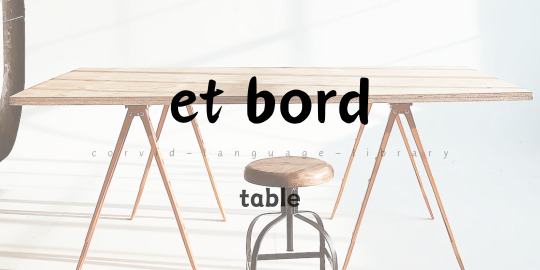
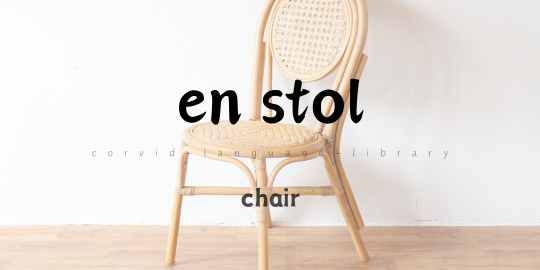

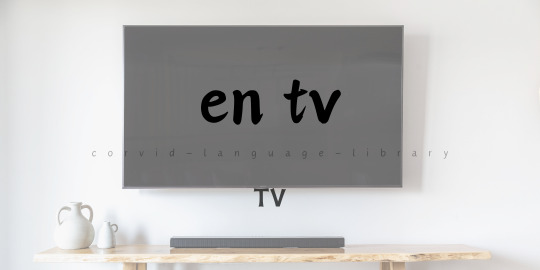






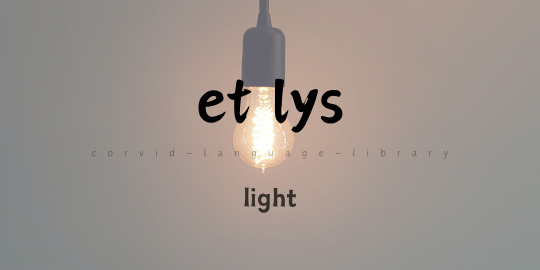
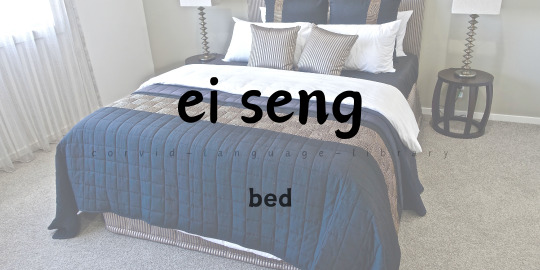

Norwegian Bokmål for Total Beginners (January 2024 Crash Course)
29. Furniture
Welcome to day 29! Yesterday we looked at rooms in a house, and now we're looking at some of the things in those rooms:
møbel (n) - a piece of furniture
bord (n) - table
stol (m) - chair
sofa (m) - sofa, couch
tv (m) - TV
bilde (n) - picture
datamaskin (m) - computer
hylle (m/f) - shelf
skap (n) - cupboard
kjøleskap (n) - fridge (literally 'cool cupboard')
lampe (m/f) - lamp
lys (n) - light
seng (m/f) - bed
klesskap (n) - wardrobe (literally 'clothes cupboard')
Bonus: Prepositions of Place
i - in
på - on
under - under
over - above
foran - in front of
bak - behind
ved - by
ved siden av - next to
overfor - opposite
mellom - between
til høyre for - to the right of
til venstre for - to the left of
Grammar: Where are my keys?
The good news about prepositions of place is that they largely overlap with English prepositions of place as outlined about. The one thing that's different when talking about where things are is that Norwegian often uses the verbs å stå (to stand - står/sto/stått) and å ligge (to lie - ligger/lå/ligget) when talking about where things are. For example:
Det ligger ei bok på bordet. (There is a book on the table)
Det står ei lampe bak tv-en. (There is a lamp behind the TV)
But you can just use å være too. It's not quite as natural, but it's perfectly valid. And if you don't know where something is, you don't know whether it's lying down or standing up, so you have to use å være:
Hvor er nøklene mine? (Where are my keys?)
De ligger på senga. (They're on the bed)
Verb in Position 2
In main clauses in Norwegian sentences, the verb always comes second, which can mean you have to invert the subject and the verb. What does that mean, I hear you asking. It's easiest to use examples. I'm going to colour-code the sentence to show position 1, position 2, position 3 and position 4.
Det står et stort bord mellom to røde stoler. (There is a big table between two red chairs).
Mellom to røde stoler står det et stort bord. (Between two red chairs there is a big table).
See how I changed the order of the words, but 'står' stayed in position 2? I couldn't have said "mellom to røde stoler det står et stort bord" as that would have pushed the verb into position 3.
Let's look at some more examples:
Jeg tar toget til jobb hver dag. (I take the train to work every day)
Hver dag tar jeg toget til jobb. (Every day, I take the train to work)
Det sto en gammel sofa til høyre for døra. (An old sofa stood to the right of the door)
Til høyre for døra sto det en gammel sofa. (To the right of the door there stood an old sofa)
Notice how the verb is always second. If the sentence starts with something other than the subject, the subject switches place with the verb (inversion) and ends up in position 3 so that the verb can stay in position 2.
If this explanation was a bit confusing or feels like it's too much grammar, don't worry! You'll pick it up soon enough and it will start to feel natural before you know it :)
#nutrcracker norsk#norwegian langblr#beginner norwegian#jan '24 beginner norwegian crash course#learning norwegian#norwegian: a1#my oc: norwegian#norwegian#norsk
7 notes
·
View notes
Text

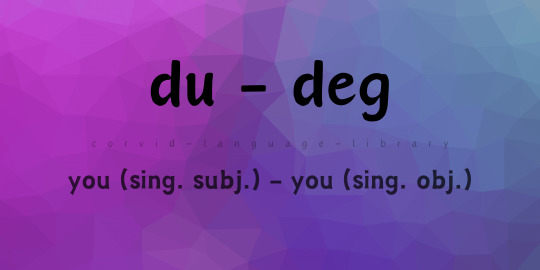





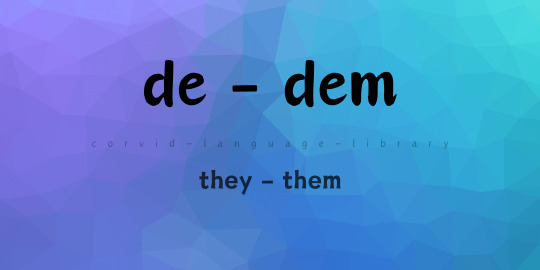
Norwegian Bokmål for Total Beginners (January 2024 Crash Course)
1. Personal Pronouns
Welcome to January's crash course in Norwegian (bokmål) for total beginners! Each day we're going to learn some basic, fundamental vocabulary in Norwegian. Obviously you won't learn to speak Norwegian through tumblr posts alone, but hopefully this will supplement your studying and reinforce things you're learning anyway, or maybe even inspire you to pick up Norwegian ;)
Anyway! Today we're looking at personal pronouns in subject and object forms:
jeg - I
meg - me
du - you (singular, subject form)
deg - you (singular, object form)
han - he
ham - him
hun - she
henne - her
hen - they, them (singular, indicating a nonbinary individual or person of unknown gender)
vi - we
oss - us
dere - you (plural, subject and object form)
de - they (plural or singular)
dem - them (plural)
As you can see, there are two pronouns for they/them. 'Hen' is only ever used as a singular person pronoun and is used when talking about someone whose gender is unknown or for non-binary individuals. It's not used by everyone but I'm seeing it more often. De and dem, on the other hand, are used as a third person plural. I've seen some people us it in place of hen too, but I don't know how common that is.
#norwegian langblr#norwegian#norsk#beginner norwegian#jan '24 beginner norwegian crash course#learning norwegian#norwegian: a1#my oc: norwegian#nutrcracker norsk
8 notes
·
View notes
Text




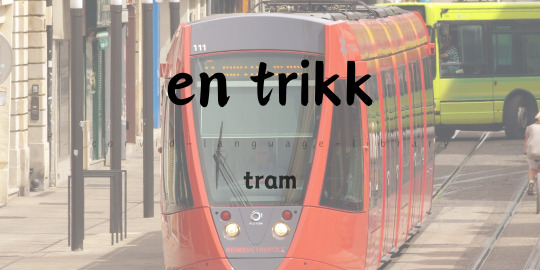


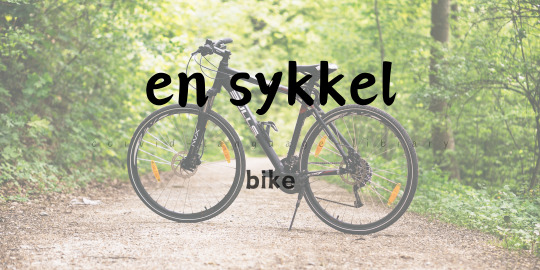







Norwegian Bokmål for Total Beginners (January 2024 Crash Course)
24. Transport
Welcome back! Time to look at some transport words:
bil (m) - car
varebil (m) - van
lastebil (m) - lorry, truck
buss (m) - bus
trikk (m) - tram
tog (n) - train
T-bane (m) - metro, subway
sykkel (m) - bicycle
motorsykkel (m) - motorbike
båt (m) - boat
ferge (m/f) - ferry
skip (n) - ship
drosje (m/f), taxi (m) - taxi
fly (n) - plane
til fots - on foot
Grammar: by bus / on the bus
When saying you go somewhere by a method of transport, use med (with)
Jeg drar på jobb med sykkel (I go to work by bike)
De kom med bil (They came by car)
To say you take the bus/train/tram etc, you can use the verb å ta:
Han tar trikken i dag (He is taking the tram today)
Du kan ta ferga til Tromsø (You can take the ferry to Tromsø)
When you are on public transport, use på:
Vi er på bussen nå (We are on the bus now)
Hun så Erling Haaland på flyet (She saw Erling Haaland on the plane)
As with English, you don't say on the car; you say you're in the car (i bilen):
Bestemor er i bilen (Grandma's in the car)
Bonus: På vei!
På vei is a useful phrase meaning "on the way":
Vi er på vei! (We're on our way!)
Jeg så en katt på vei til skolen (I saw a cat on the way to school)
Er du på vei ennå? (Are you on your way yet?)
De var endelig på vei (They were finally on their way)
#nutrcracker norsk#norwegian langblr#beginner norwegian#jan '24 beginner norwegian crash course#learning norwegian#norwegian: a1#my oc: norwegian#norwegian#norsk
6 notes
·
View notes
Text
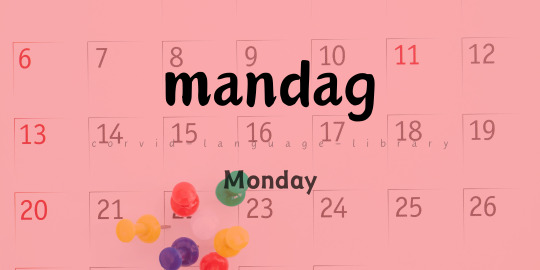


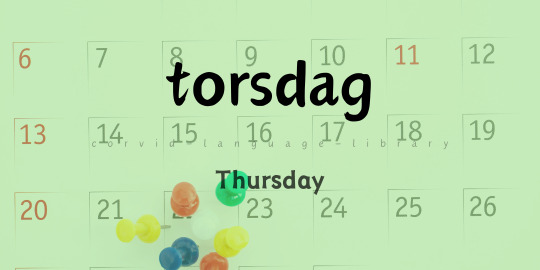



Norwegian Bokmål for Total Beginners (January 2024 Crash Course)
17. Days of the week
Hello everyone! Today's lesson is easy: days of the week!
mandag - Monday
tirsdag - Tuesday
onsdag - Wednesday
torsdag - Thursday
fredag - Friday
lørdag - Saturday
søndag - Sunday
Grammar: On this day...
When you say you do something on a particular day, use på. If it's just a one-off, use the day in the singular. If you always do an activity on a particular day every week, make it plural:
Jeg spiller tennis på lørdager (I play tennis on Saturdays)
Hun kjøpte melk på onsdag (She bought milk on Wednesday)
De drar hjem på tirsday (They're going home on Tuesday)
Hva gjør du på mandag? (What are you doing on Monday?)
Notice that days of the week don't start with a capital letter in Norwegian like they do in English.
Etymology
The origins of the days of the week names in Norwegian are fairly similar to those in English:
mandag = moon day
tirsdag = Tyr's day (from Tyr, the god of war in the Norse pantheon)
onsdag = Odin's day
torsdag = Thor's day
fredag = Frigg's day (goddess of prophecy and motherhood)
lørdag = washing day (laundry day)
søndag = sun day
#nutrcracker norsk#norwegian langblr#beginner norwegian#jan '24 beginner norwegian crash course#learning norwegian#norwegian: a1#my oc: norwegian#norwegian#norsk
6 notes
·
View notes
Text


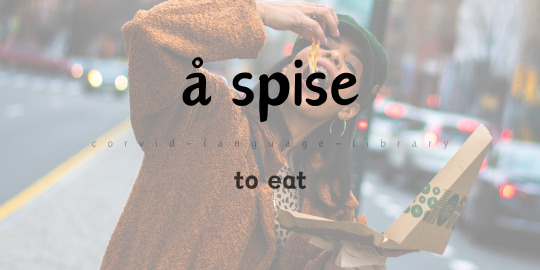




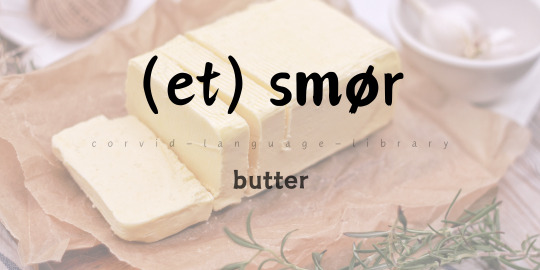




Norwegian Bokmål for Total Beginners (January 2024 Crash Course)
13. Food
Hello again! I hope you're hungry, because today we're talking about food!
mat (m) - food
måltid (n) - meal
å spise - to eat
brød (n) - bread
ost (m) - cheese
egg (n) - egg
et smørbrød (n) - sandwich
smør (n) - butter
olje (m/f) - oil
sukker (n) - sugar
salt (n) - salt
pepper (m) - pepper
Extras
frokost (m) - breakfast
lunsj (m) - lunch
middag (m) - dinner
sulten/sultent/sultne - hungry
brødskive (m/f) - slice of bread
Grammar: Ikke
'Ikke' (not) was mentioned on day 2, so let's quickly look at it in some sentences:
Jeg liker ikke ost. (I don't like cheese)
Hun spiser ikke egg. (She doesn't eat eggs/She's not eating eggs)
De er ikke sultne. (They aren't hungry)
In simple sentences, 'ikke' comes after the verb. It gets a bit more complicated when you start making longer sentences or you want to add nuance. Don't worry about that for now though.
In questions, 'ikke' comes after the subject:
Liker du ikke smørbrød? (Don't you like sandwiches?)
Spiser dere ikke frokost? (Don't you eat breakfast?)
Er han ikke sulten? (Isn't he hungry?)
Words like always (alltid), never (aldri) and only (bare) follow the same pattern:
Vi spiser alltid egg til frokost (We always eat eggs for breakfast)
Hen har aldri smør på smørbrødene sine (They never have butter on their sandwiches)
Spiser du bare den brødskiva? (Are you only eating that slice of bread?)
Til frokost/lunsj/middag
To say you eat something *for breakfast/lunch/dinner, use the preposition 'til':
Hva spiser du til middag? (What do you eat for dinner?)
Hun spiser smørbrød til lunsj (She eats sandwiches for lunch)
#nutrcracker norsk#norwegian langblr#beginner norwegian#jan '24 beginner norwegian crash course#norsk#norwegian#learning norwegian#norwegian: a1#my oc: norwegian
6 notes
·
View notes
Text
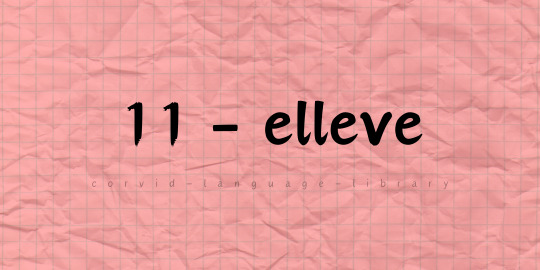



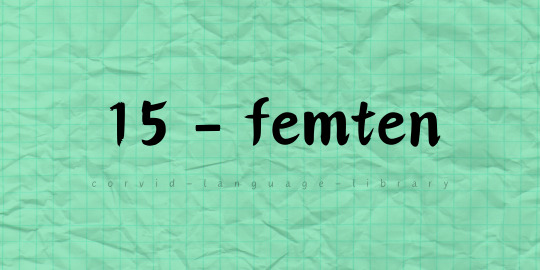
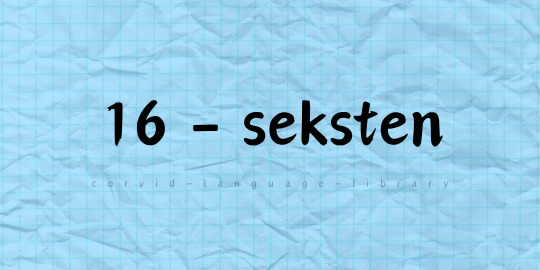




Norwegian Bokmål for Total Beginners (January 2024 Crash Course)
6. Numbers 11-20
Welcome to day 6 - here are numbers up to 20! As with numbers 0-10, they're pretty similar to English. Just be careful of number 16, which despite the spelling is pronounced more like SIGH-stn.
Don't forget to review numbers 1-10 and the rest of what you've learned so far ;)
11 = elleve
12 = tolv
13 = tretten
14 = fjorten
15 = femten
16 = seksten
17 = sytten
18 = atten
19 = nitten
20 = tjue, tyve (both are okay, tyve is more conserative/old fashioned)
Grammar: Defintes + Numbers
When you want to say "the (number) (noun)", it's exactly the same word order as in English. You'll need to use 'de' as well as the definite form of the noun!
De tolv mennene = the twelve men / those twelve men
De tjue kvinnene = the twenty women / those twenty women
De femten barna = the fifteen children / those fifteen children
De atten trærne = the eighteen trees / those eighteen trees
#nutrcracker norsk#norwegian langblr#beginner norwegian#jan '24 beginner norwegian crash course#learning norwegian#norwegian: a1#my oc: norwegian#norwegian#norsk
6 notes
·
View notes
Text

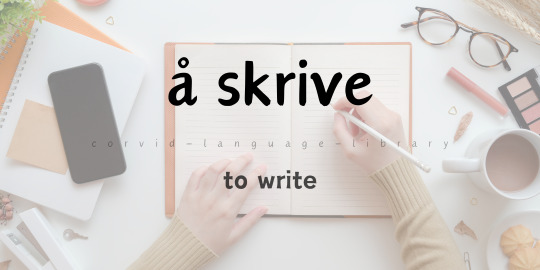








Norwegian Bokmål for Total Beginners (January 2024 Crash Course)
16. Basic Verbs 2
Welcome back! Today we have 10 (well, 12) more basic verbs for you, as well as a how-to on the past tense
å lese (v2) - to read
å skrive (v) - to write
å si (v) - to say
å snakke (v1) - to speak
å sove (v) - to sleep
å se (v) - to see
å spille (v2) - to play
å jobbe (v1), å arbeide (v2) - to work
å kjøpe (v2), å handle (v1) - to buy*
å selge (v) - to sell
*Å kjøpe is the most general way to say 'to buy'. Å handle is mostly used to talk about grocery shopping (å handle mat = to buy groceries)
Grammar: 4 Verb Groups
There's a fair bit of grammar here, so take your time with it. You don't have to memorise it all today; just be aware of it so that when you're immersing/studying otherwise, you can spot these different forms and make mental notes.
You may have noticed I added some things in brackets to our vocabulary list this time. What's v1/v2, you ask? Well, it indicated the verb group.
There are 4 groups of weak verbs in Norwegian (there are exceptions and sometimes they belong to multiple groups):
Group 1: verbs with more than one consonant before the final e (å snakke, å elske)
Group 2: verbs with 1 consonant before the final e (å like, å kjøpe), 2 Ls (å spille) or nk/ng (å tenke)
Group 3: verbs that end -ve, -ge or -eie (å leve, å lage*, å leie)
Group 4: verbs that end in a stressed vowel (å bo)
*Å lage is also, for whatever reason, a group 1 verb. I told you there are exceptions. Don't panic; I promise you pick it up through immersion and you'll get to a point where you'll know a verb's group based on vibes alone.
Why are verb groups important? Because they tell you how to form the past tense.
Group 1 verbs: you have two options! Either add -t (more common, more conservative) or change the final -e to an -a (more radical)
å snakke -> snakket/snakka
å jobbe -> jobbet/jobba
å elske -> elsket/elska (love)
Group 2 verbs: the final -e becomes -te:
å like -> likte
å kjøpe -> kjøpte
å lese -> leste
å spille -> spilte (note: the double L becomes a single L)
å tenke -> tenkte (think)
Group 3 verbs: the final -e becomes -de:
å leve -> levde (live)
å eie -> eide (own)
å leie -> leide (rented)
Group 4 verbs: add -dde
å bo -> bodde
å tro -> trodde (believe)
å snu -> snudde (turn round/back)
There are also strong verbs. These are irregular and you just have to learn them. Here are some from this series so far:
å være -> var
å ta -> tok
å gjøre -> gjorde
å dra -> dro
å komme -> kom
å gå -> gikk
å få -> fikk
å gi -> ga/gav
å drikke -> drakk
å skrive -> skrev
å si -> sa
å sove -> sov
å se -> så
å selge -> solgte
There's a third form of the verb too, but we'll leave it there for today.
Like I say, don't worry about memorising this. Reference this post when you want to write things. Whenever you're reading things or listening to something, see if you can spot the different verb endings even if you don't know the verb or understand much of what's being said.
If in doubt, you can check how to conjugating a verb by looking it up on ordbøkene.no and clicking "vis bøyning".
#nutrcracker norsk#norwegian langblr#beginner norwegian#jan '24 beginner norwegian crash course#learning norwegian#norwegian: a1#my oc: norwegian#norwegian#norsk
5 notes
·
View notes
Text



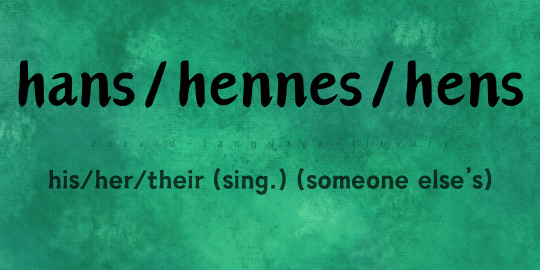
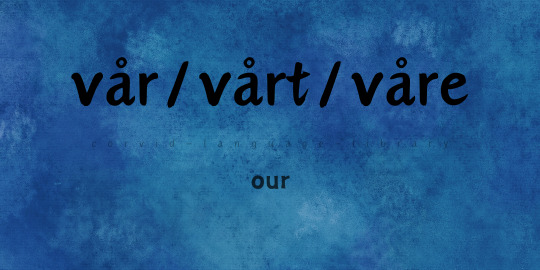

Norwegian Bokmål for Total Beginners (January 2024 Crash Course)
10. Possessive Pronouns
Hello all! Today we're looking at possessive pronouns. We get a little grammar heavy here, but I'm sure you'll pick it up. You may notice that most have different forms... yep, they correspond to gender! More on that in a minute.
min (m/f) mi (f) mitt (n) mine (pl) - my/mine
din (m/f) di (f) ditt (n) dine (pl) - your/yours (sing)
sin (m/f) si (f) sitt (n) sine (pl) - his/her/hers/their/theirs (one's own)
hans - his (another person's)
hennes - her, hers (another person's)
hens - their, theirs (another person's)
vår (m/f) vårt (n) våre (pl) - our/ours
deres - your/yours (pl), their/theirs (plural, another person's)
Grammar
Possessive pronouns can come either before or after the noun. When placing it after the noun, you need to use the definite form. Both of these sentences are correct ways to say "my car is red":
Bilen min er rød.
Min bil er rød.
The first one is a more common and neutral structure. The second puts emphasis on the pronoun. Say someone asked you: "is this your car?" And the car is blue, you might say, "nei, min bil er rød" (no, my car is red).
For feminine nouns, you can use either the masculine form or the feminine form, but you can't mix and match:
✅ Datteren min
✅ Dattera mi
❌ Datteren mi
❌ Dattera min
You can also use possessive pronouns on their own to mean mine/yours/ours/theirs:
Den grønne bilen er min (The green car is mine)
Er denne boka din? (Is this book yours?)
Det svarte huset er vårt (The black house is ours)
Dette er deres (This is yours/theirs)
Sin/si/sitt/sine or hans/hennes/hens/deres?
Both sin/si/sitt/sine and hans/hennes/hens/deres refer to third person. Sin/sitt/sine refer to the subjects own object, while hans/hennes/hens/deres refer to someone elses. Take a look at these sentences:
Ingrid liker søstera si.
Ingrid liker søstera hennes.
Both these sentences can be translated as "Ingrid likes her sister". But in the first sentence, we're talking about Ingrid's own sister. In the second, we're talking about another girl or woman's sister.
#nutrcracker norsk#norwegian langblr#beginner norwegian#jan '24 beginner norwegian crash course#learning norwegian#norwegian: a1#my oc: norwegian#norwegian#norsk
5 notes
·
View notes